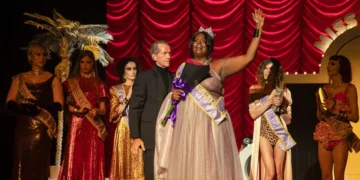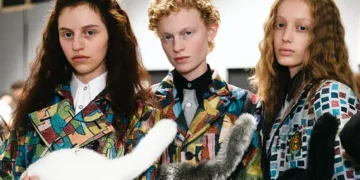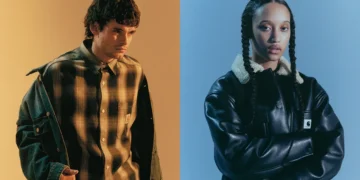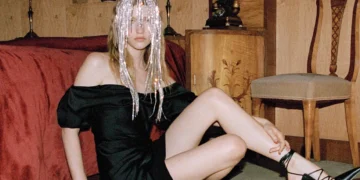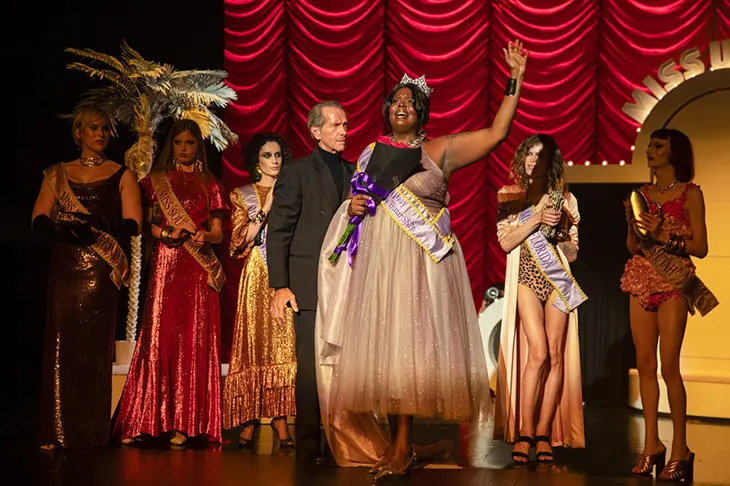
Alexis Bittar has always used fashion as a medium for commentary, and his Spring Summer 2026 collection sharpened that point. He staged the work as a theatrical presentation, drawing from his long fascination with surrealism and old cinema. The show carried references to David Lynch’s Blue Velvet, Brian De Palma’s Carrie, Sofia Coppola’s The Virgin Suicides, and Stanley Kubrick’s Eyes Wide Shut. Each film contributed to an atmosphere of unease, fragility, and excess. From those cinematic touchstones, Bittar shaped his version of Miss USA 1991, a warped beauty pageant where performance and critique overlapped.

At the center of the story stood Nik Pjeternikaj, The Host, a figure who embodied unchecked patriarchy. Around him, contestants performed as the innocents, locked into impossible demands of perfection as they pursued the crown. The pageant audience wore masks, reflecting a society that consumes, judges, and accepts the spectacle without question. This triangle, patriarch, contestant, and public, defined the narrative tension that drove the show.
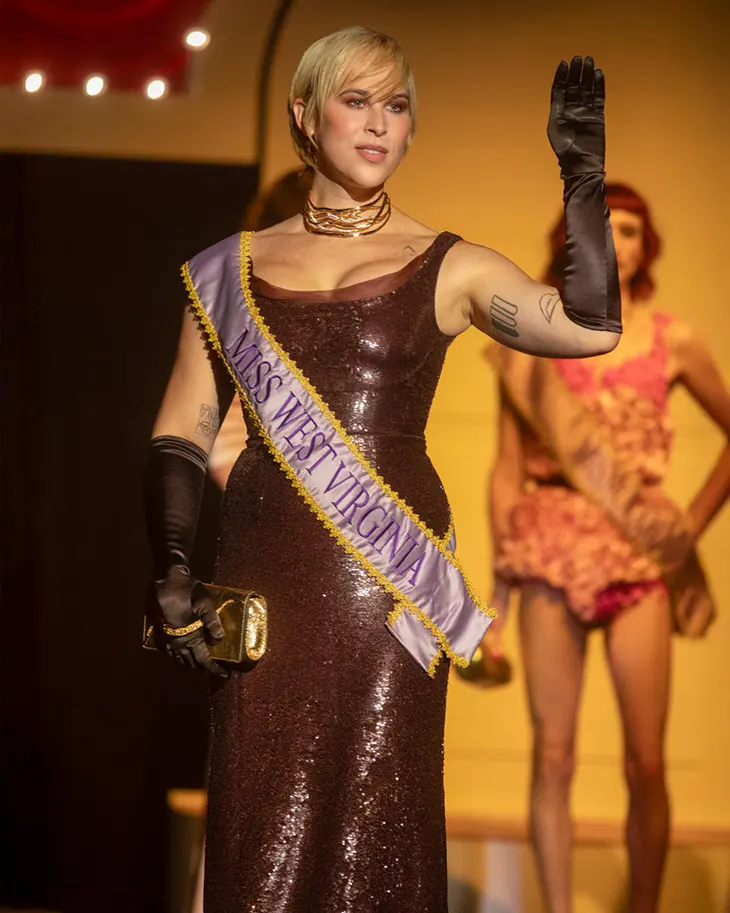
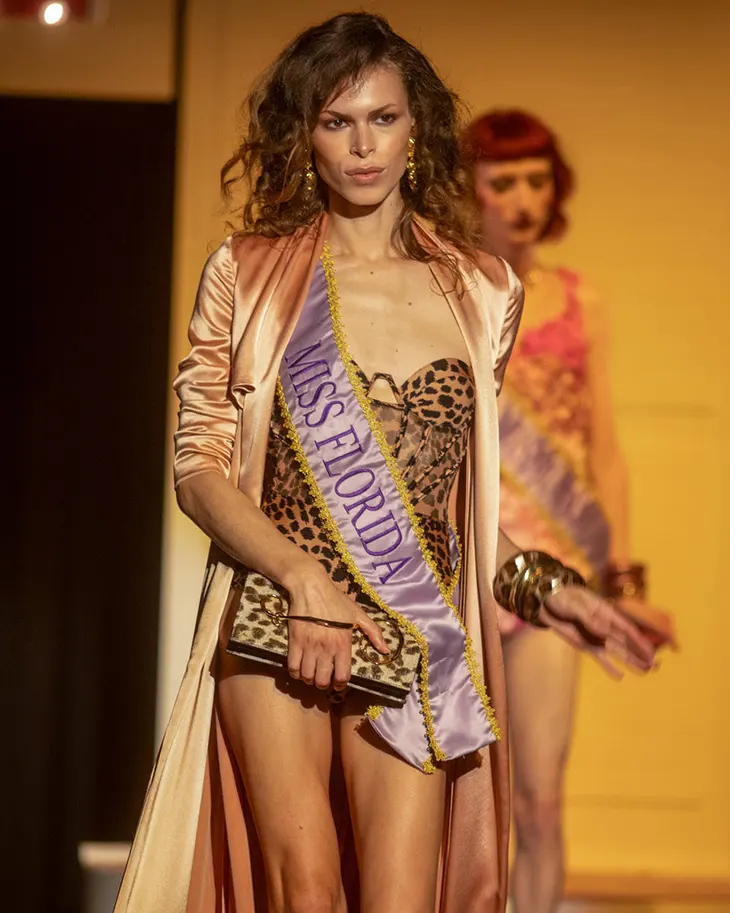
Bittar cast each contestant to represent a U.S. state currently targeting trans rights. The casting choices carried his critique into a direct political register, making the beauty pageant a lens through which to examine violence and control. By tying the narrative to ongoing legislative battles, Bittar created a sequence that stood between past and present, revisiting the early 1990s while speaking directly to 2026.
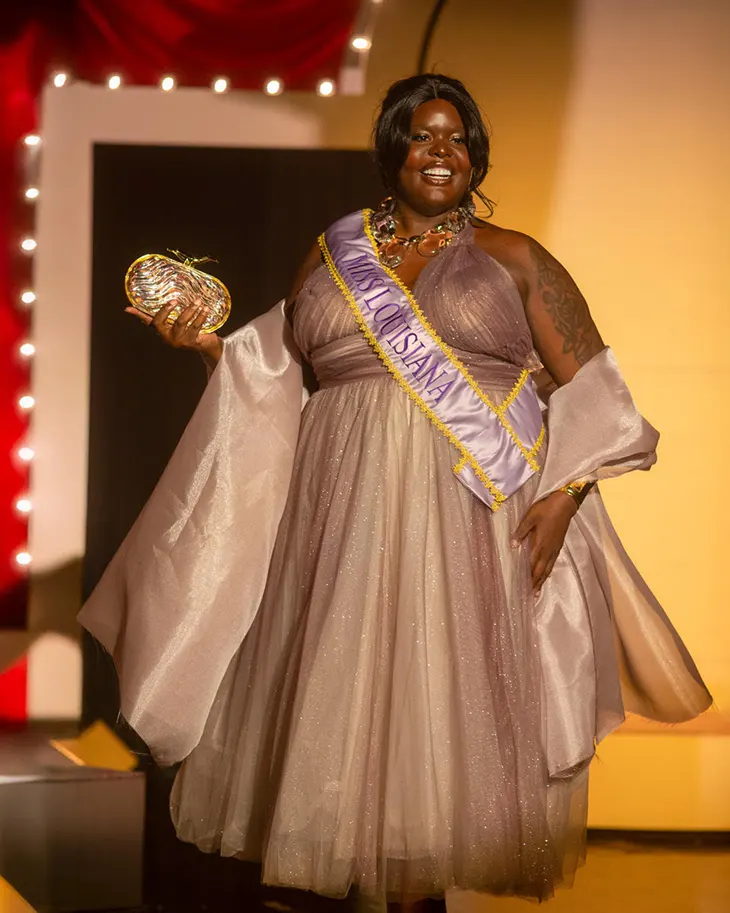
The casting gave faces and names to the narrative. Amara Gisele stood as Miss Florida, Dylan Miller as Miss Alabama, Efron Danzig as Miss Tennessee, Gia Love as Miss Louisiana, Niko Haagenson as Miss Utah, Tommy Dorfman as Miss West Virginia, and Vivian Jenna Wilson as Miss South Carolina.
The Miss USA 1991 framework extended into the clothing and accessories. Bittar explored tension between restraint and excess, pulling from early ’90s minimalism and late ’80s maximalism. He worked those influences into pieces that tested contrast: fluid forms against structure, texture against control, boldness against fragility.
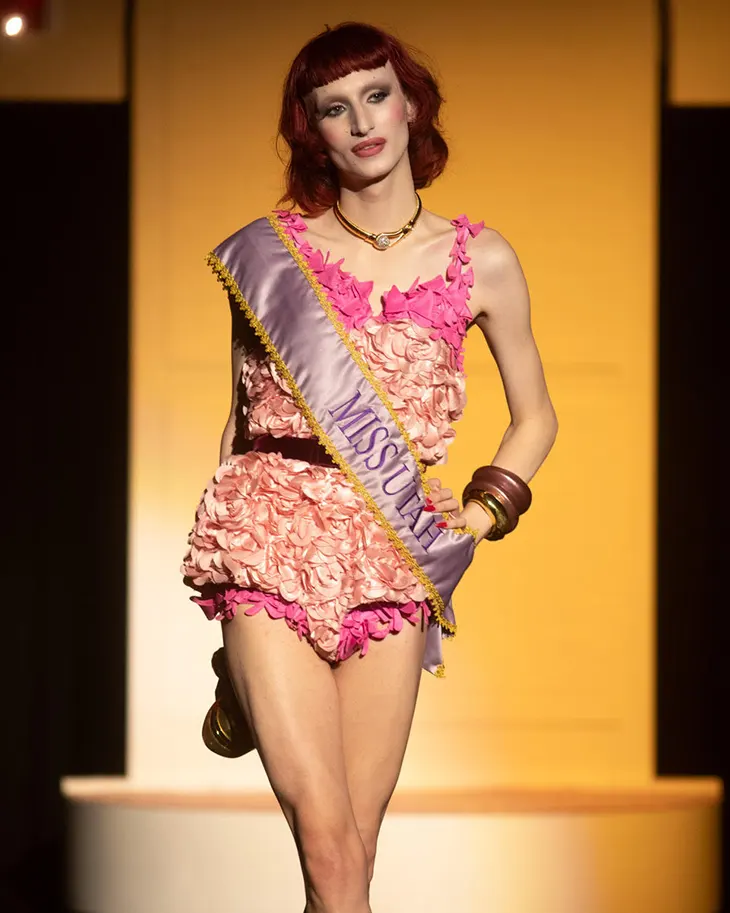
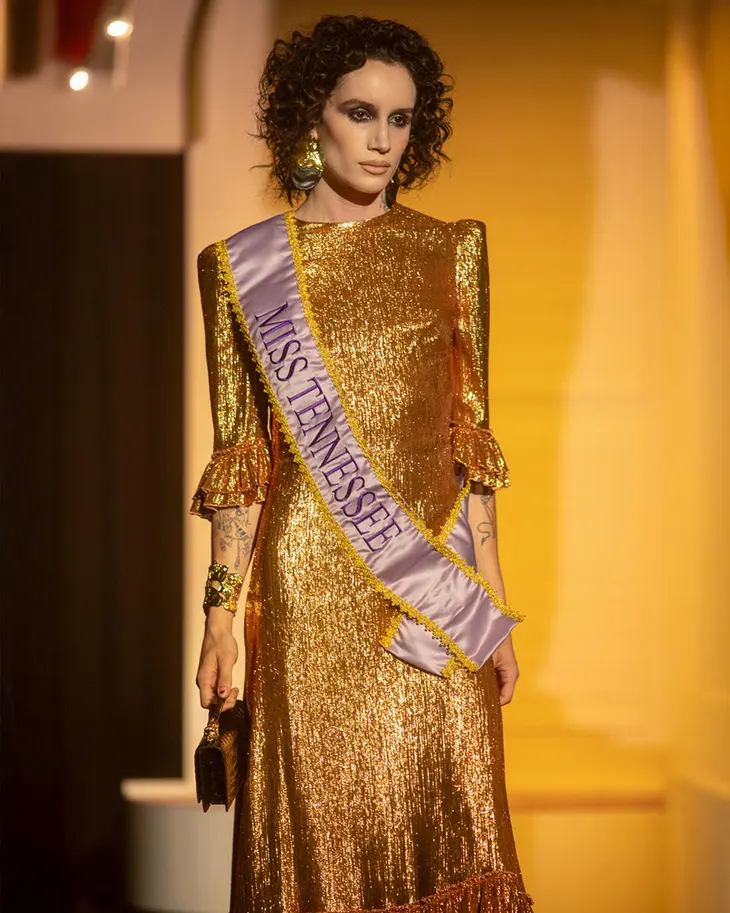
Accessories carried the most direct visual cues. Bittar used hand-sculpted Lucite to create a palette of sherbet tones, mauve and teal, that spoke to the early ’90s. He set these soft shades against fractured, gold-textured shapes. The hard edges broke through the pastels, producing a layered tension between fragility and force.
The pageant unfolded as theatre, with Alexis Bittar using fashion to shift between costume and cinema, memory and performance in Spring Summer 2026.
